A tent for two that is also a (two-person) hammock tarp which weighs 150 grams in cuben. How good is that? During this coronavirus lock down we are very busy here on the farm building several kilometres of new vermin-proof fences just for example. I also need to spend hours each day on share market associated things in order to protect our retirement savings. That is why there have been so few posts lately – just when you probably wanted some entertainment – but we have never been so busy!
We have also both had this awful cold (not the plague so far as we know) which has been hard to shake. The amazing thing is that it got to us behind all our precautions. Admittedly it was before we cut ourselves off completely – but we have always been pretty stand-offish and hygiene conscious – though moreso now! Della and our grandson brought it home from his kindergarten. There were fewer than 5 coronavirus cases at the time in the whole of Gippsland, so I don’t think we have caught it yet – and don’t want to.
I am also working on a new version of the Whelen Tent. I had thought to use the time to finalise my ‘Deer Hunter’s Tent‘ design and set it up on the lawn a couple of weeks ago to see what I needed to do. It has been standing there in the wind and rain like that for two weeks now without any adjustment and is still quite dry inside.
I still think it can be my lightest tent yet and I will (eventually) revisit it but I have this (silylon) material from China which is approx 5′ 6″ wide so I thought about shrinking the Whelen down so that I could just use two pieces of this sewn together. That brought the front height down from nearer 7′ to just 5’. You can still enter it from a standing position, and that is tall enough for either of us to stand bent over so we can at least get dressed standing up.
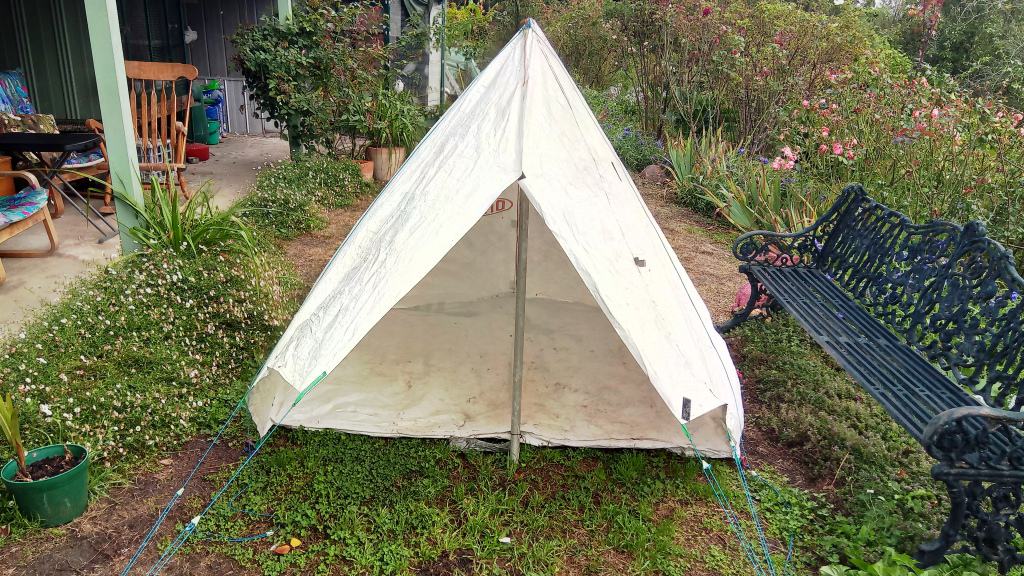
After many nights drawing and rubbing out I have shrunk this down to under 94 square feet of material (minus the catenary curves) which are too difficult to calculate but perhaps 1.5-2 square feet (2.52 as it turns out), so about 91-2 ft2. That brings the maximum material weights (for the roof alone) down as follows: Tyvek 504 grams, 1.25 oz silnylon: 336 grams, 1.08 silylon (China again) 290 grams, .77 oz Robic silnylon (RipstopByTheRoll) 207 grams, cuben fibre: 134 grams. I reckon on 80 grams of pegs and think I can shrink the tie-outs and guys down to less than 70 grams (regardless of which material I use).
I have already cut out the Tyvek version and begun sewing it together but made a mistake on the front flaps so have to unpick and start again. If I am not too tired from fencing I may get onto it tonight. otherwise it will have to wait until the weekend when the fencer will be away…
Progress. I have sewn it together. Here it is spread out on the floor. As you can see it will make quite a large shelter. Spot can’t wait to try it out!
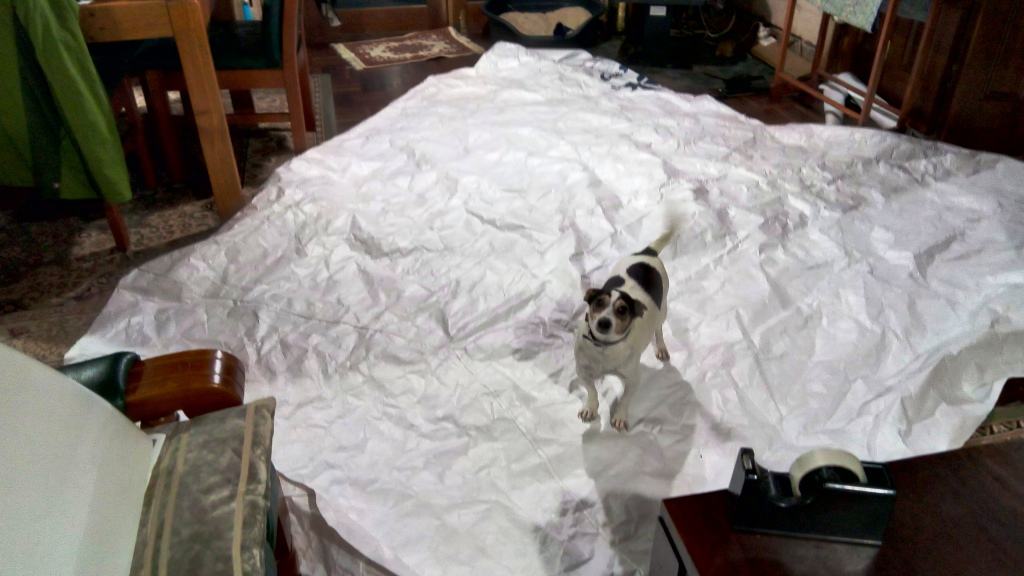
Folded in half. Quite an acceptable hammock tarp – I calculate big enough for both of us (for Fiordland weather!)
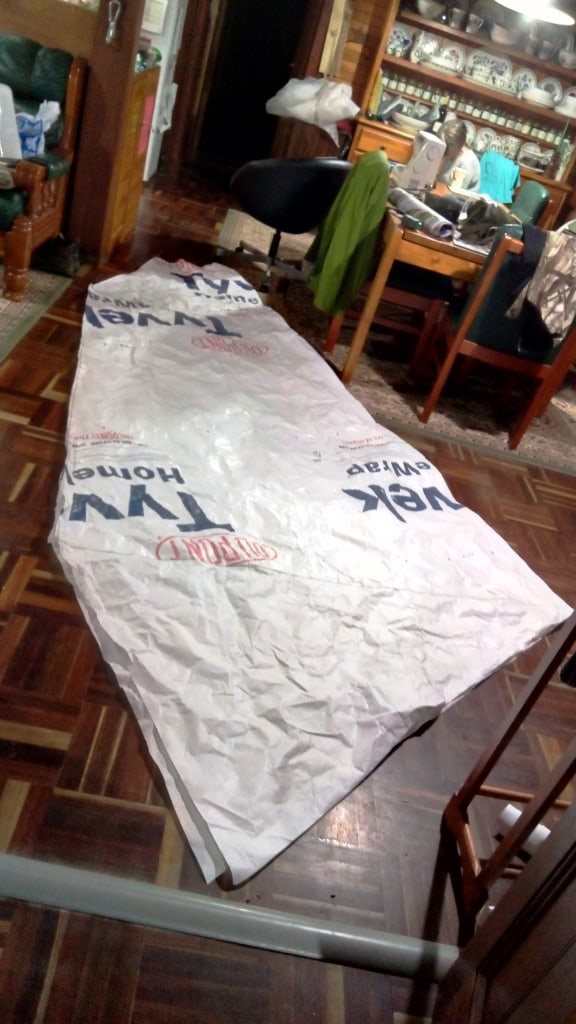
And rolled up. There remains about 25-30 grams to be trimmed off it – so quite close to my calculation of a bit over 500 grams of material weight. I had not thought about the weight of all the seams.
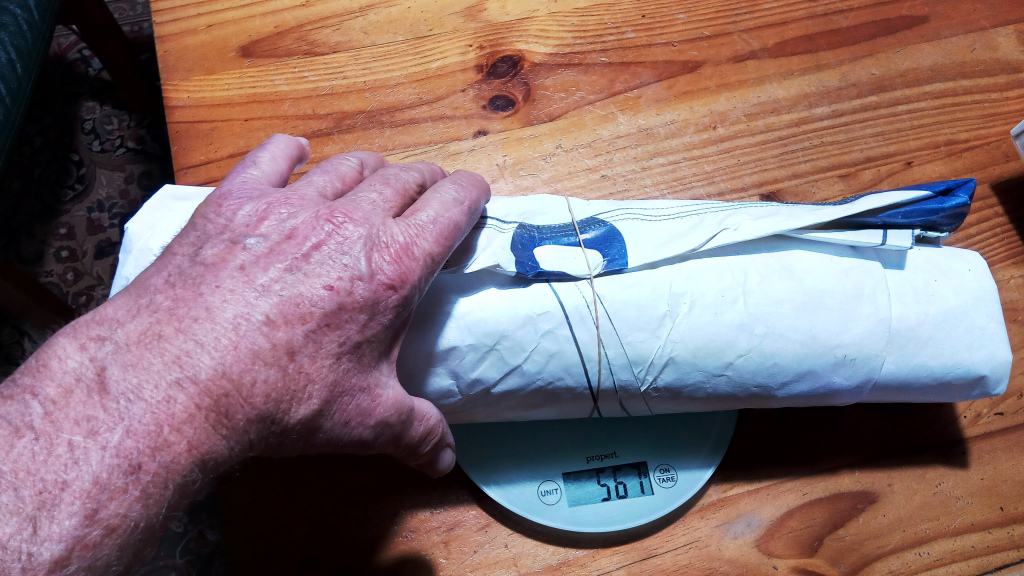
The prototype original version looked like this (below), nearly 7′ high at the front. This shrunk version will be 5′ high at the front and 3′ at the back. It will be 5′ 6″ wide at the front and 3′ 6″ wide at the back. It will have an additional 5 ft2 storage area at the back and a large vestibule area at the front.
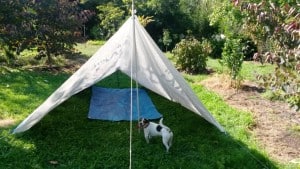
During my exploration of the back wall design I came to the realisation that if I added in well less than half a square yard of fabric I would be able to use this tarp as either a tent or a hammock tarp – so I went with that (in cuben half a square yard is 7 grams!) However it would mean I would have to forego a sewn in floor. No hardship for me anyway. The extra material will fold up out of the way when it is pegged to the ground. Wait and see!
If I just use a space blanket or a piece of polycro for a floor (say under 50 grams, the tent will weigh just 200 grams more than the above weights : so 490 grams in the 1.08 silnylon – the best weight/price option, (It will require 9 yards approx of material) or 330 grams in cuben fibre complete! I have enough .5 oz/yd2 cuben fibre in a (Fiordland) hammock tarp Della made for me years ago, and in bits and pieces, so I will be making this one up. Be patient! I know you don’t believe that there could be a large two-person all-weather tent which weighs just 330 grams, but you will be proven wrong!
I will be able to make a separate bathtub floor for it (or utilise my Pocket Poncho Tent for that purpose. I may even make my inflatable bathtub floor for it. I have the material (1.1 oz/yd2) and am waiting on the double-sided tape I will need to make it. I accidentally purchased single sided seam (heat) sealing polyurethane tape. An approx 7′ x 4′ inflatable edge bathtub floor will weigh 139 grams for the material (and whatever for the tape, say around 150 grams. It would also be possible to add an ultralight insect screen but it would add another 40 grams to its weight. I am going to add vents high up on the door flaps later on. I have worked out a design for them.
The internal area of the tent (fully closed – which it will almost never be) is over 42 square feet. There is copious room for two (very tall) people, plus a couple of dogs and oodles of gear. There will also be enough room for heating the tent with the miniature dome stove when it arrives. Tim Tinker is working on it. Here us his progress report: https://timtinker.com/miniature-dome-stove-for-a-tarp-tent/#comment-71
I imagine I will use the Tyvek version most because I will never burn holes in it, and around 700 grams is not too bad – but for overnight hunts I will use the cuben version at just 330 grams. I will be able to employ my ‘Hunting Until Dark‘ camping strategy with it. I am hoping for some silpoly fabric (because of its low stretch and the fact that repair tape adheres to it) at around 1 oz/yd2 to come my way eventually. That would be ideal.
I mark out the catenary curves with a template I made up years ago on a plywood off-cut.
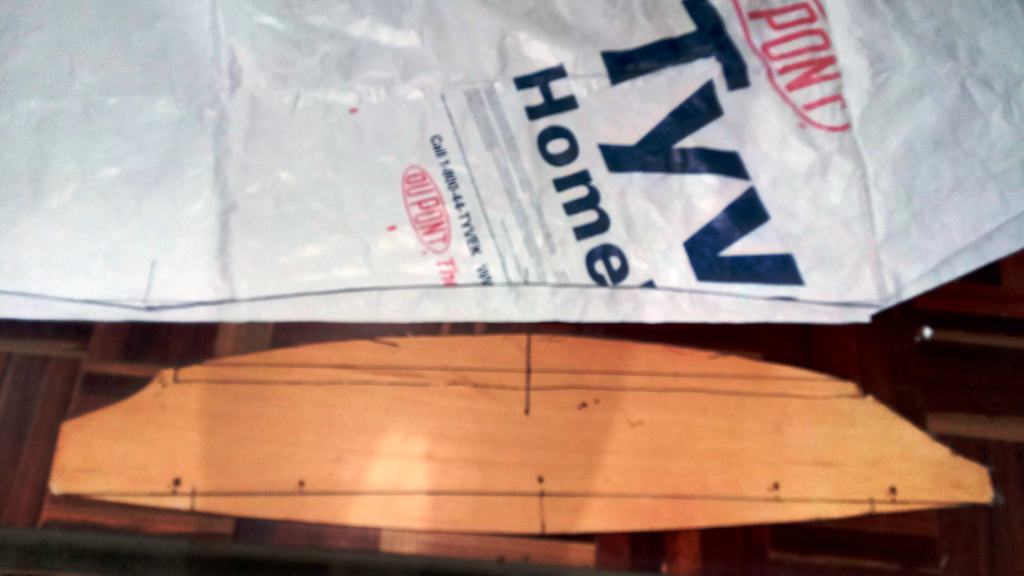
Everything has mass. These waste pieces of Tyvek weigh 15 grams. I know this is less than I calculated. I was going to trim 6″ off the bottom widest extent of the door flaps. This would have subtracted 1.75 ft2 or 10 grams more. I now think that the 10 grams is better spent on weatherproofing against extreme conditions. I will need to sew on a couple of velcro tabs to close it completely.
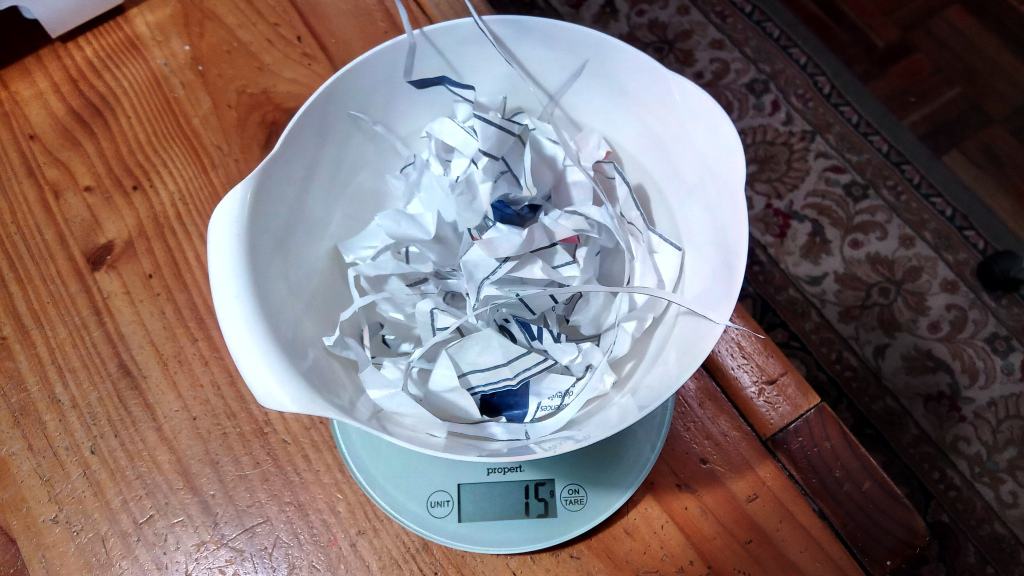
The canopy looks much better with its scalloped edges. The ridge-line of the canopy is 10′ long. Together with its width (11′) and the fact that it can be completely closed off at one end, this should be enough to shelter two of us hanging side-by-side in our hammocks like this. The dogs figure to fit in there somewhere too.
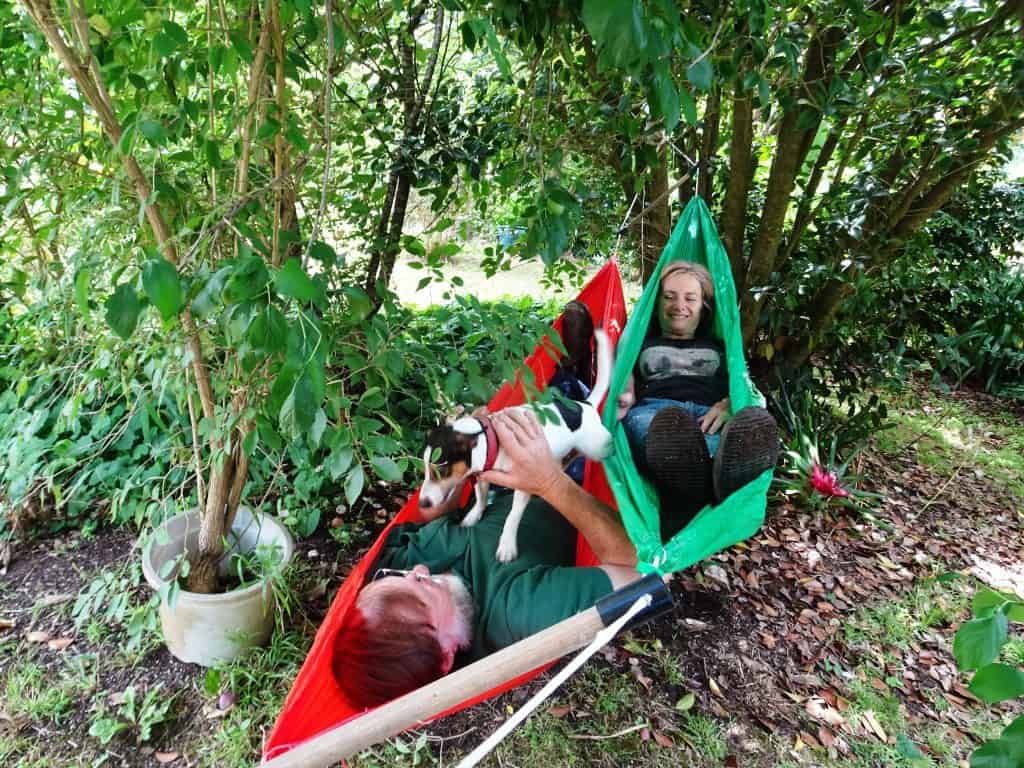
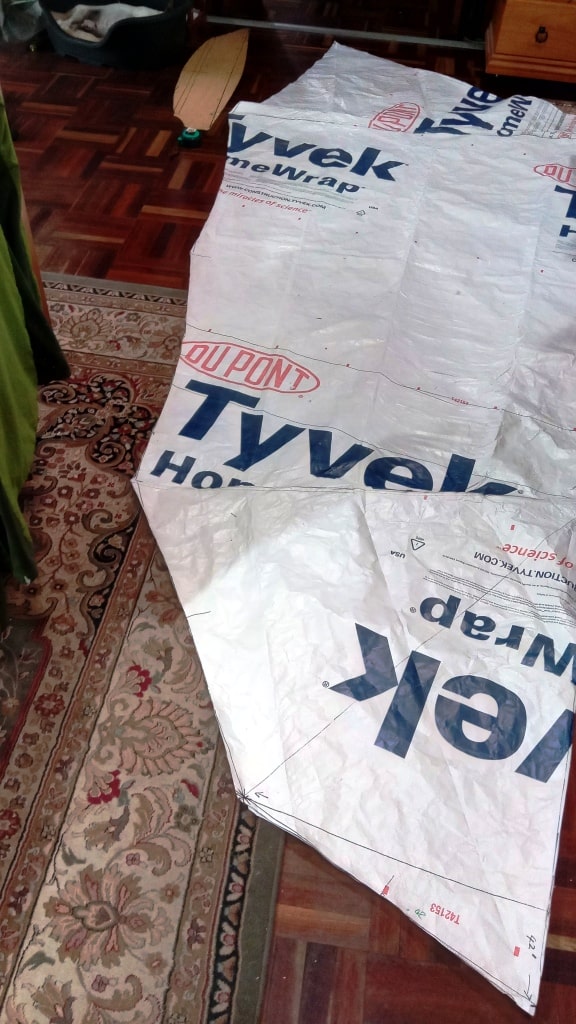
I reinforce the tie out points with a 4″ x 4″ right angled triangle of Tyvek which I tape on. This is much stronger in this material than sewing. When I sew up the hem I will have four thicknesses of Tyvek to sew my gross-grain tie-out to. That should be plenty strong enough, but I might reinforce both sides on the two end tie-outs. A warning, do not allow the tape to get caught up in the sewn hem area (I did). The adhesive makes sewing a nightmare.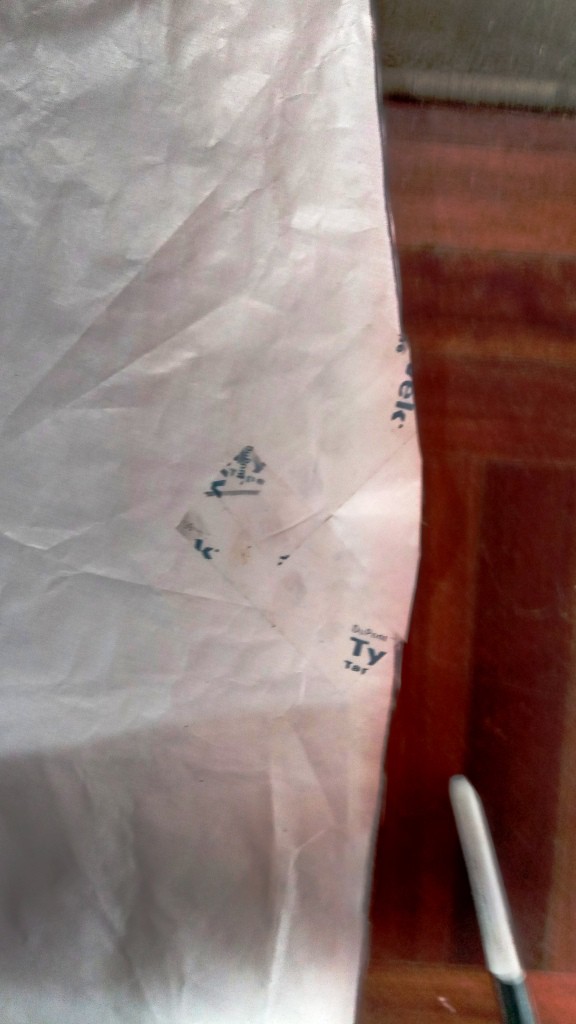
I hope to complete it over Easter and be able complete this post then…(Easter Tuesday) Well, I didn’t quite make that deadline. I have a few minor jobs to do on it – and I still have to think about a floor, but here it is set up for the first time (I don’t have any micro cord locks yet so it is not as taut as it will be, but it may give you the idea:
Plenty of head room for two – and enough room for heaps of gear as well as a couple of dogs.
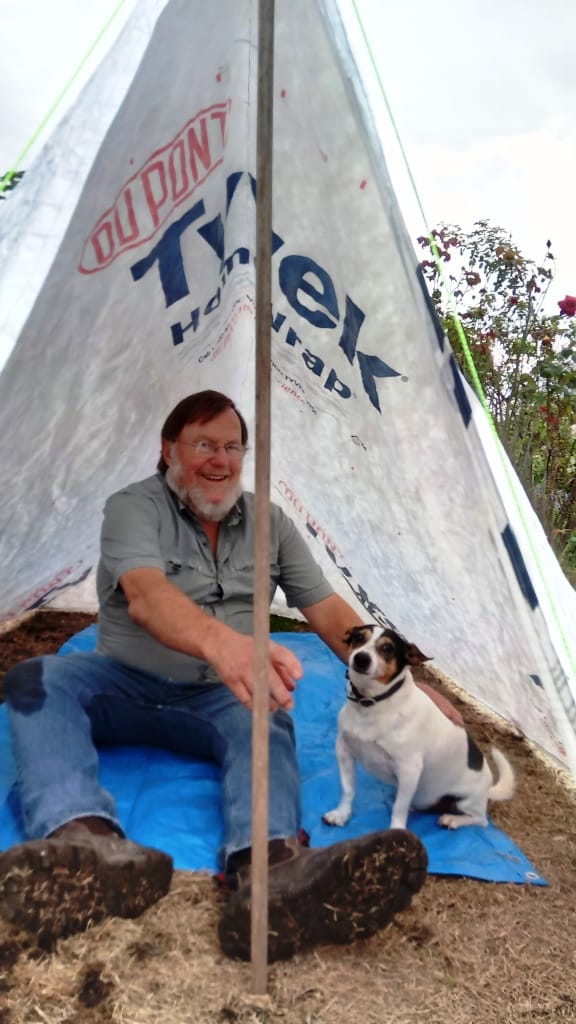
I would normally pitch it part-open as in the next photo. The gap is big enough to benefit from the warmth of the fire out the front whilst being completely out of the wind and rain.
I will probably sew a triangle of fabric at the top of the open ‘V’ (about 45 cm or 18″ long) which can close the top of the “V’ when it is raining a lot.
I will probably also sew dyneema patches on the inside of the tent so I can bring the poles completely inside the tent, – so no water can enter there.
In the rain all I would need would be my ‘fire umbrella‘ out the front to prevent the fire from going out in the rain – or the miniature dome stove inside the tent to keep us nice and warm.
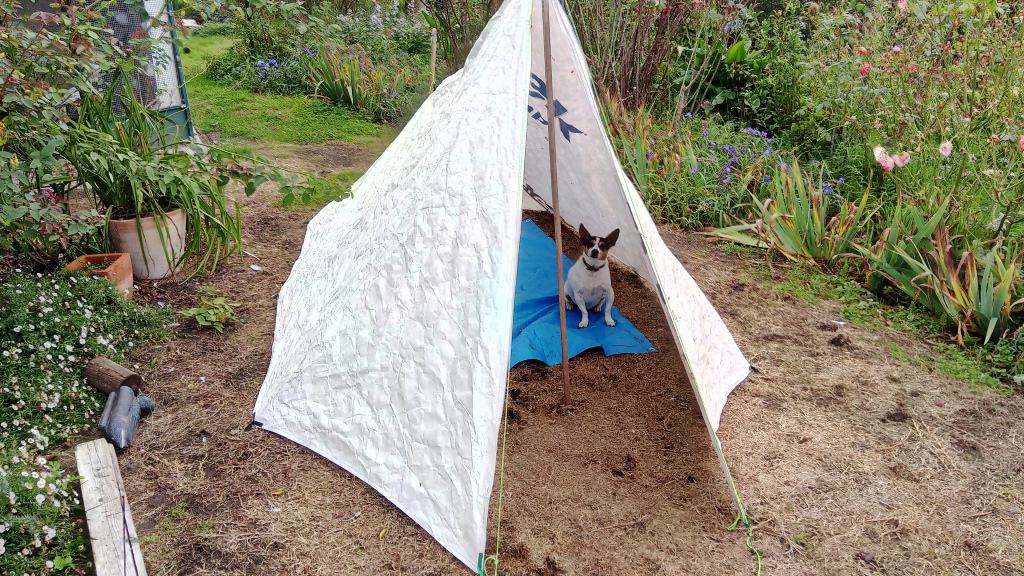
That is a ‘standard’ 6′ x 4′ (1.8 x 1.2 m) poly tarp Spot is sitting on. As you can see it goes nowhere near the sides of the tent. You are not going to have to worry about getting wet from condensation in this one – and there is certainly plenty of room to spread your gear out: his to the left (of the picture), hers to the right.
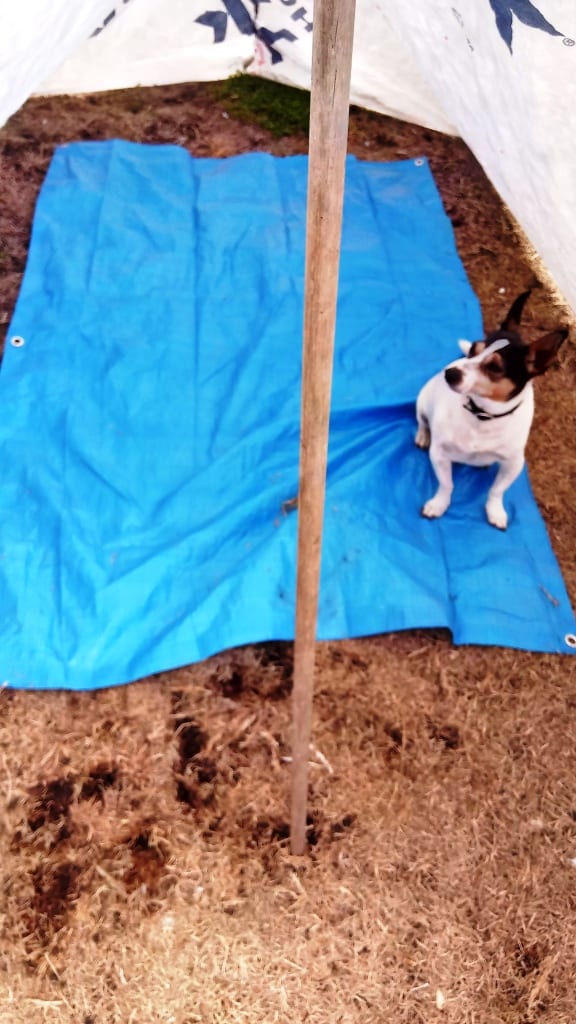
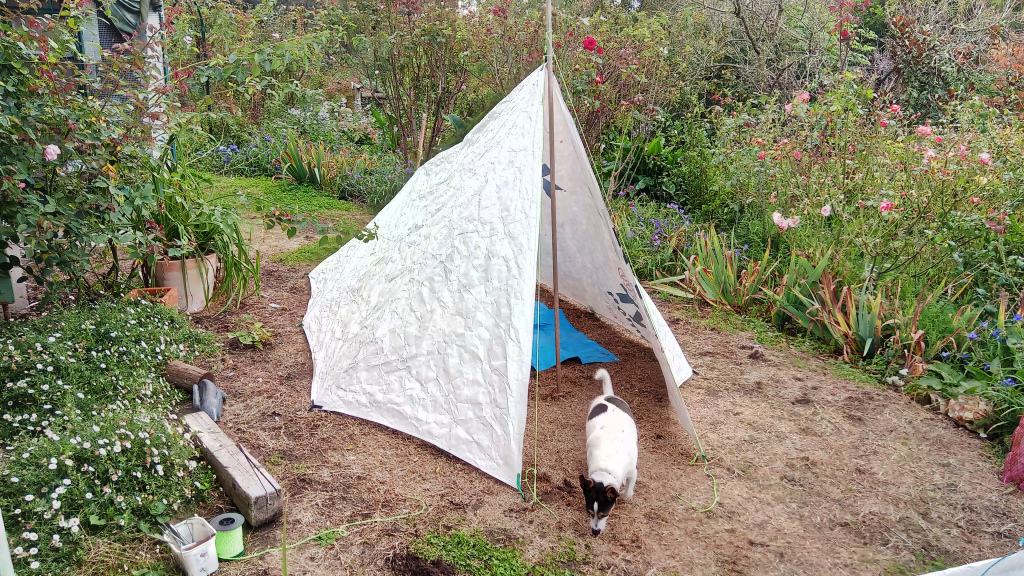
I will tidy up the pitch at the rear. I said before the extra material can fold over (as shown) or be pulled out for more ventilation, and when you are using it as a hammock tarp.
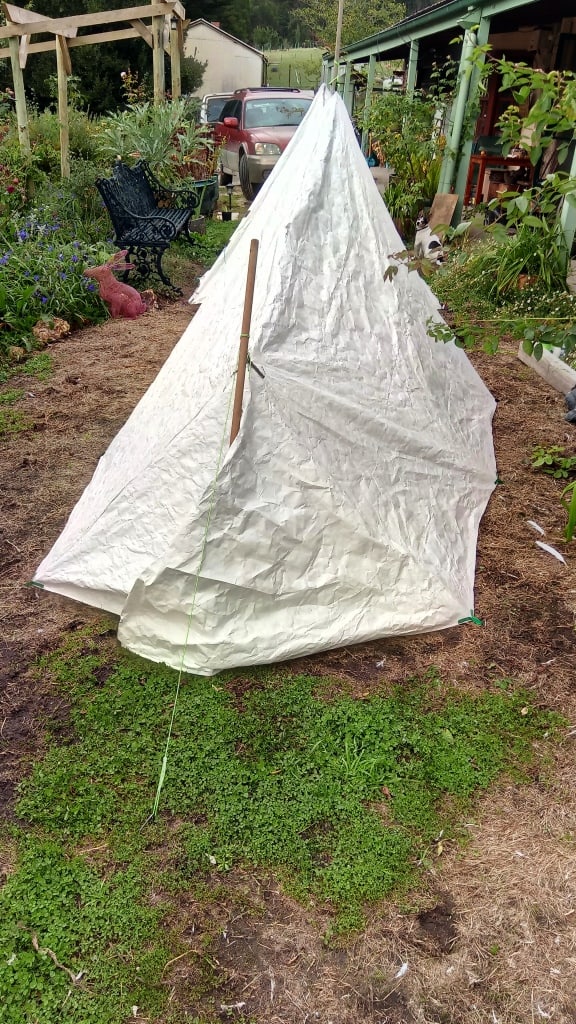
The old and new Deer Hunter’s Tents.
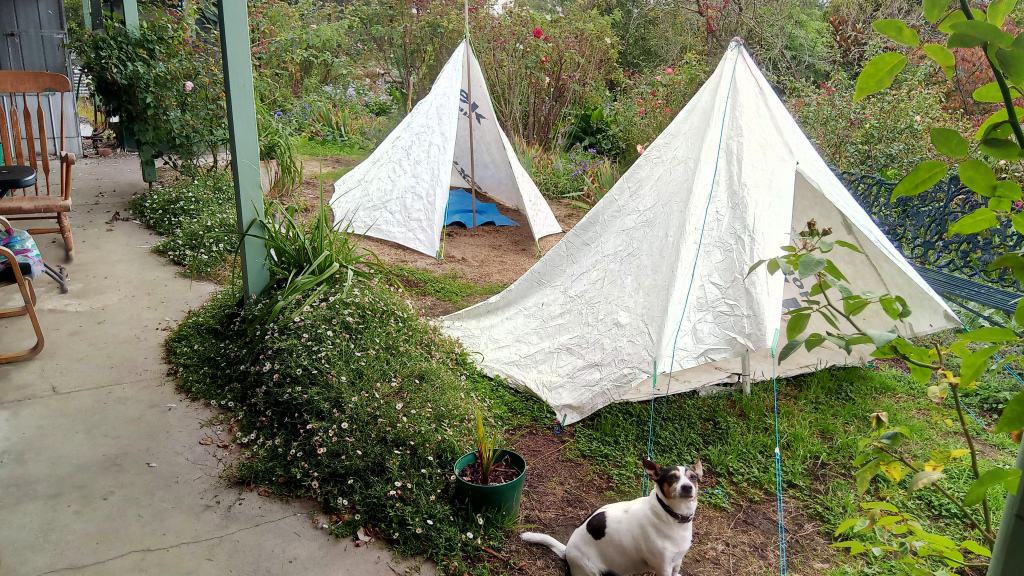
I will soon finish it off completely and try to show you how it will worked pitched as a hammock tarp – hopefully with the two of us swinging gaily underneath it!
Behind my head is the weather end. The two tent door flaps can be pinned down and in as shown. No rain will come in from this (windward) direction. There was room for two dogs only Honey jumped out just before the photo was taken.
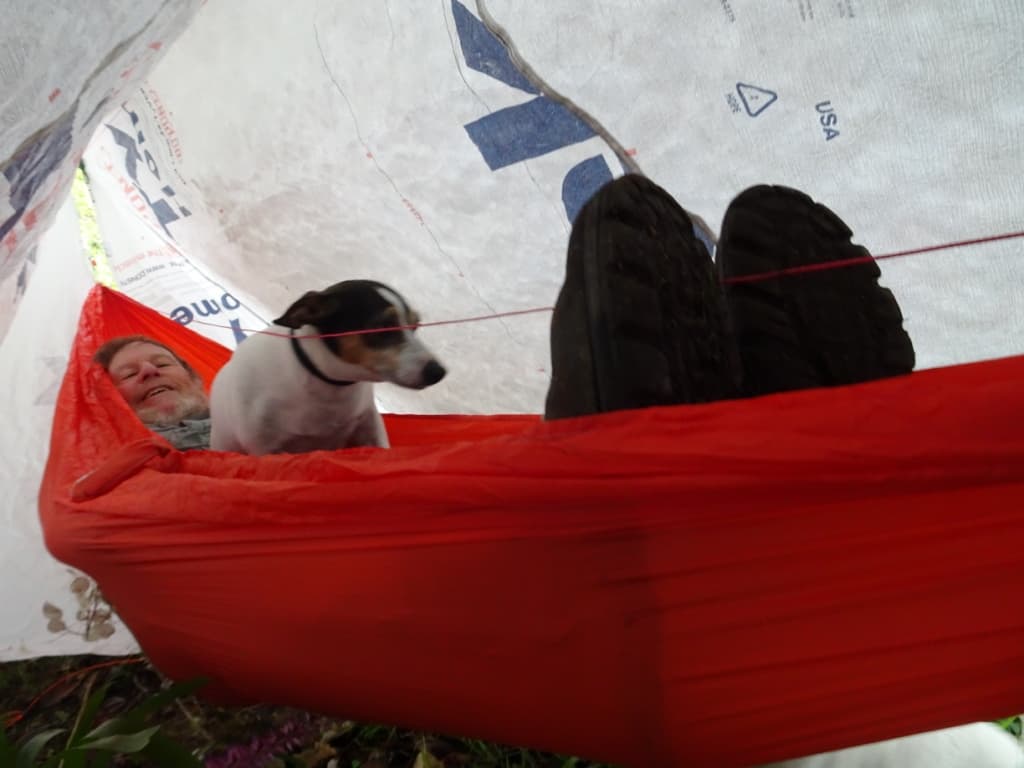
Looking in from the other end. The two closest tir-outs to thte foot end can be joies with a carabiner (which comes in handy when pitching it as a tent). This will make it utterly weather-proof on the lee end.
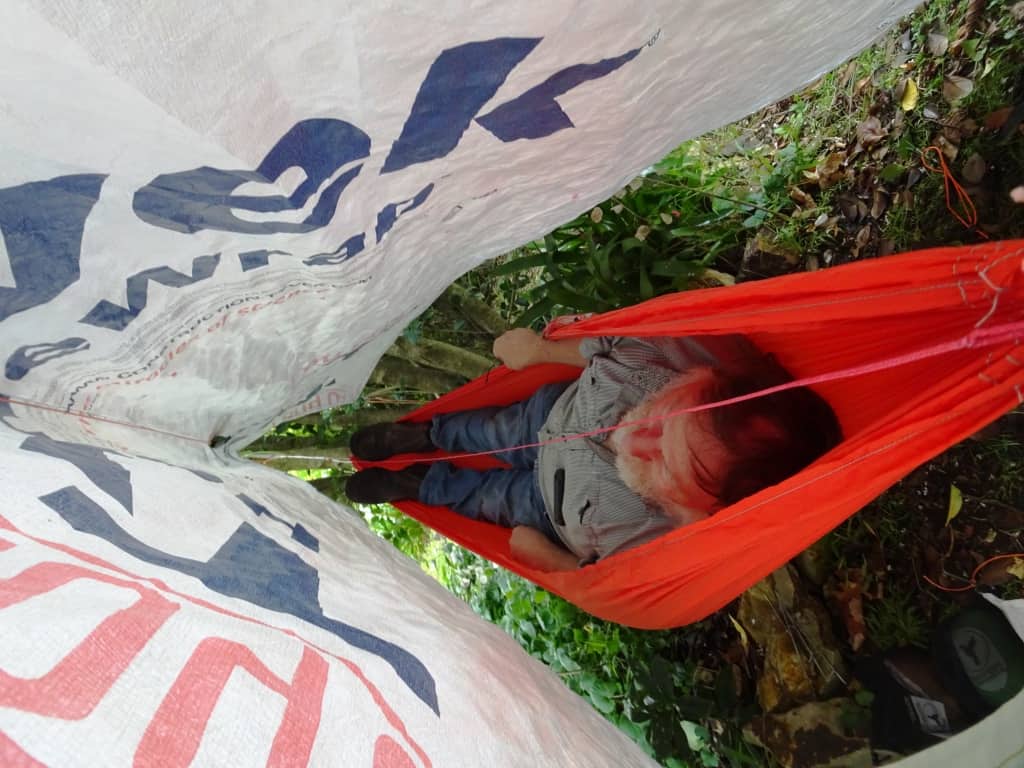
Trying to get you an idea of how wide ans spacious it is, not very successfully. We could both swing under it in our hammocks – only there is no-one else at the moment to take a photo. Another time…
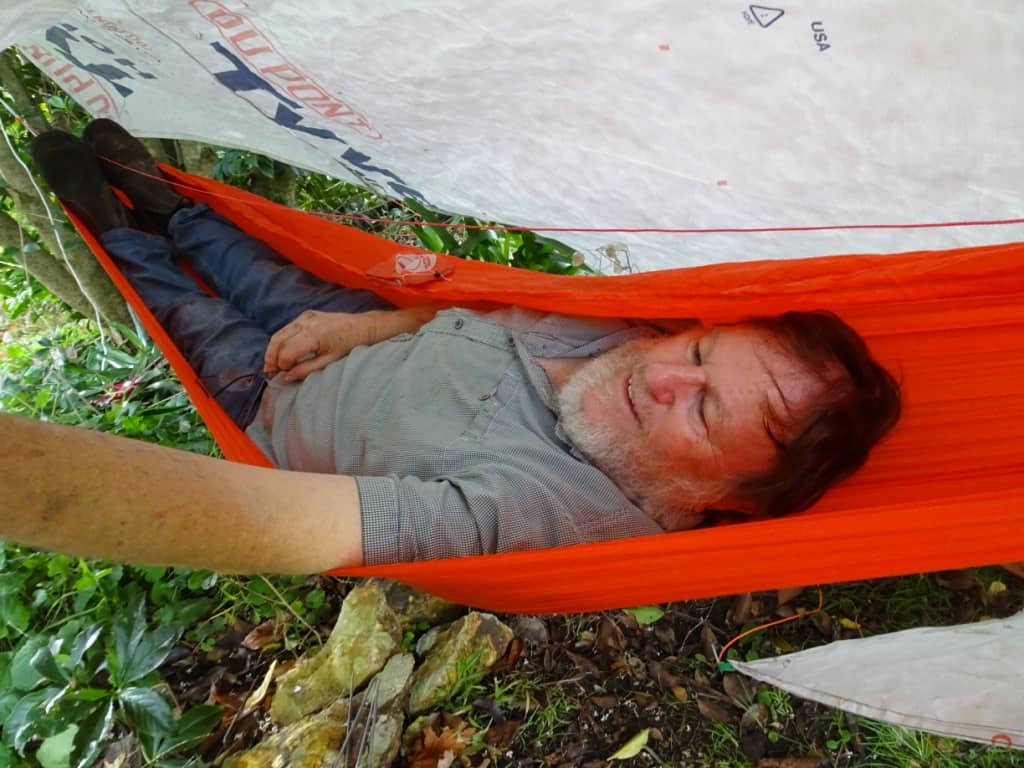
One side view.
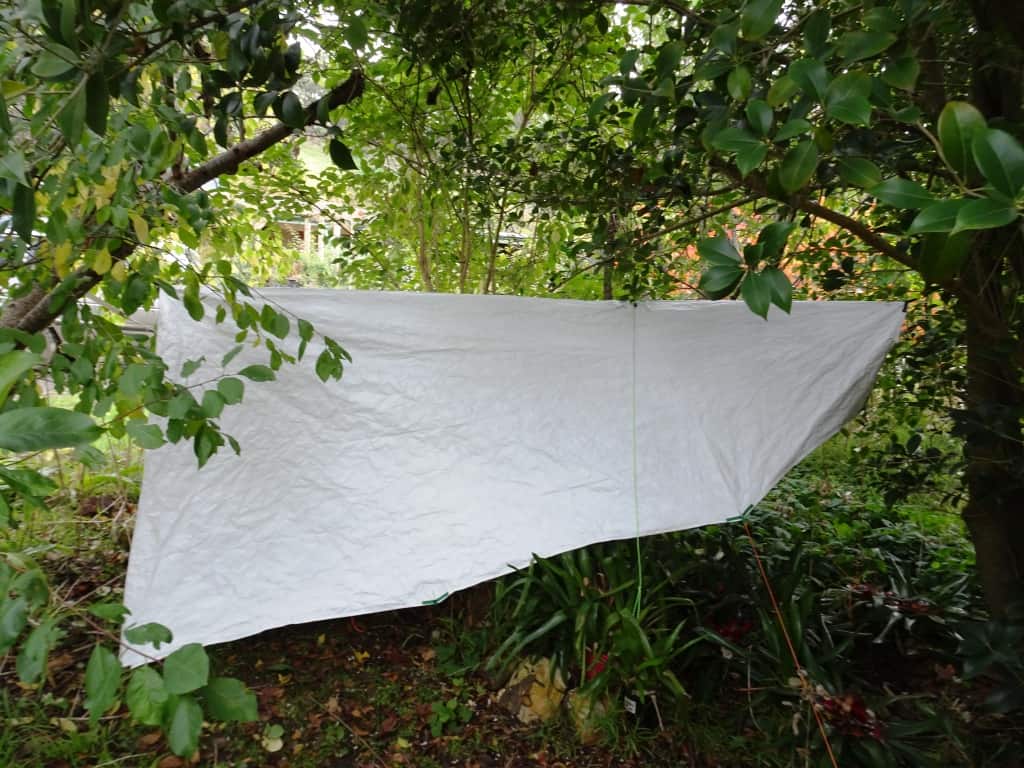
And the other.
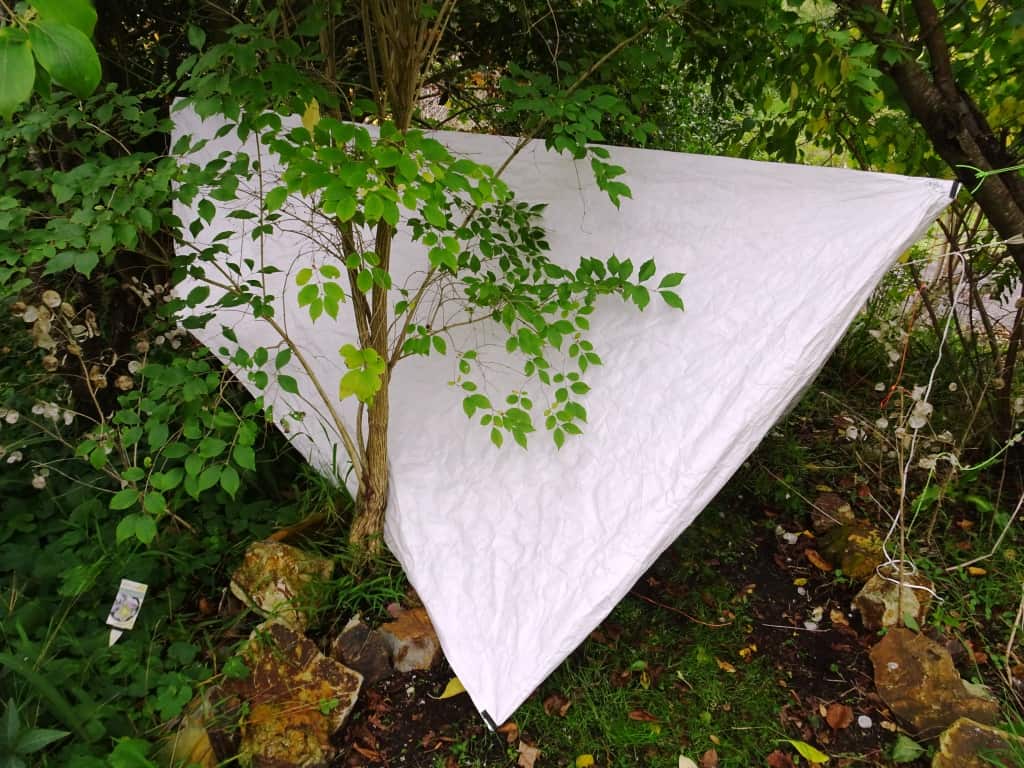
See how the flaps can close off the windward end.
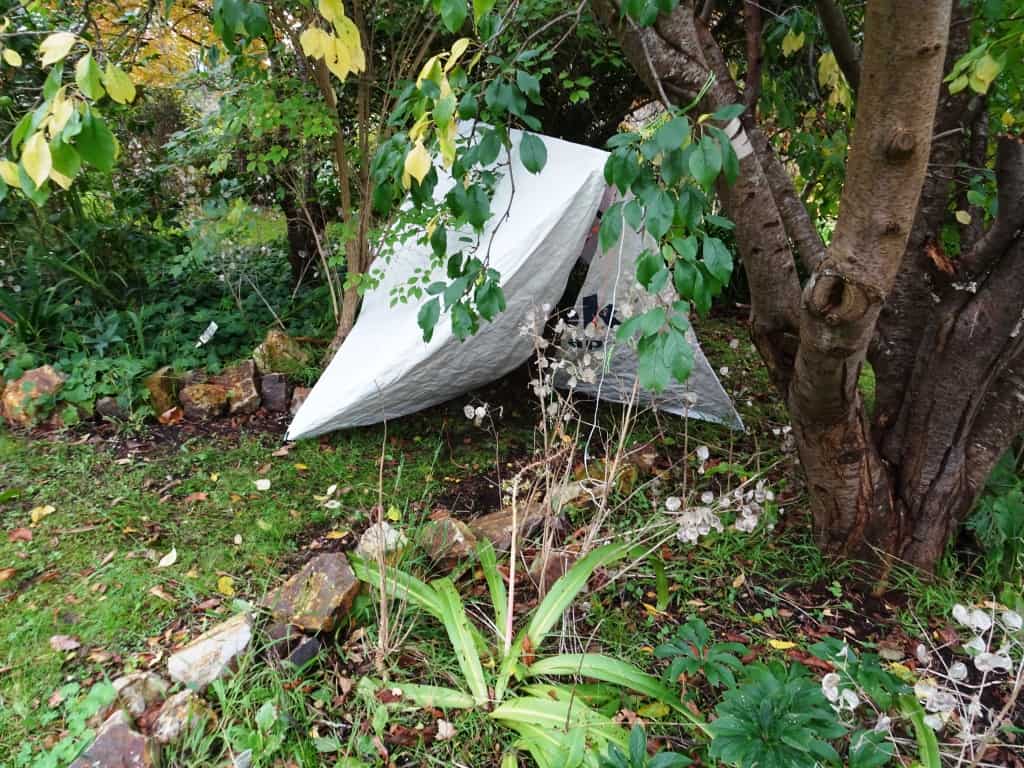
I have added some bits of velcro so you can close the front flaps together yet still get in and out.
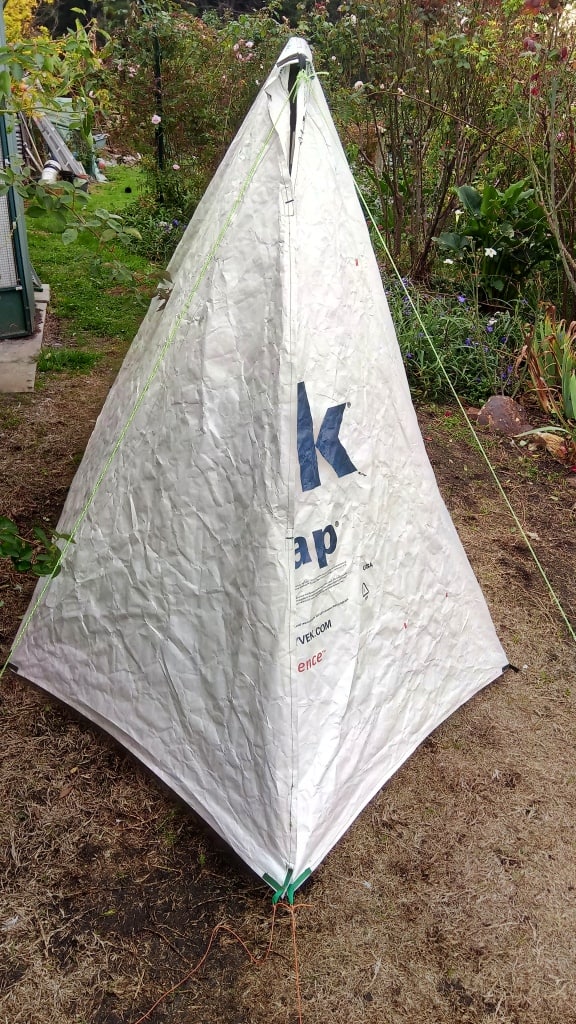
I could use another one just here so that there is a vent right at the top.
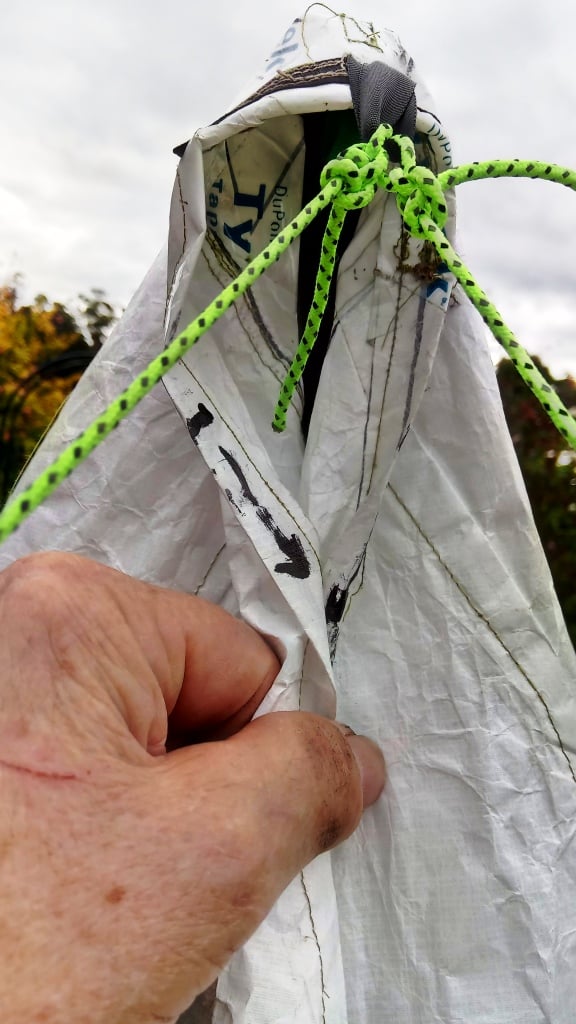
See how the extra material at the back of the tent can be swung out of the way.
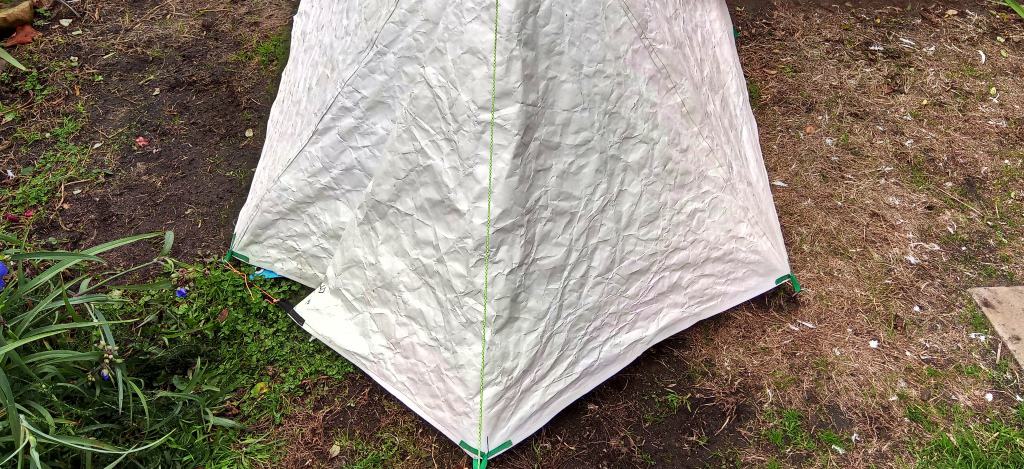
One flap is closed and the other is open.
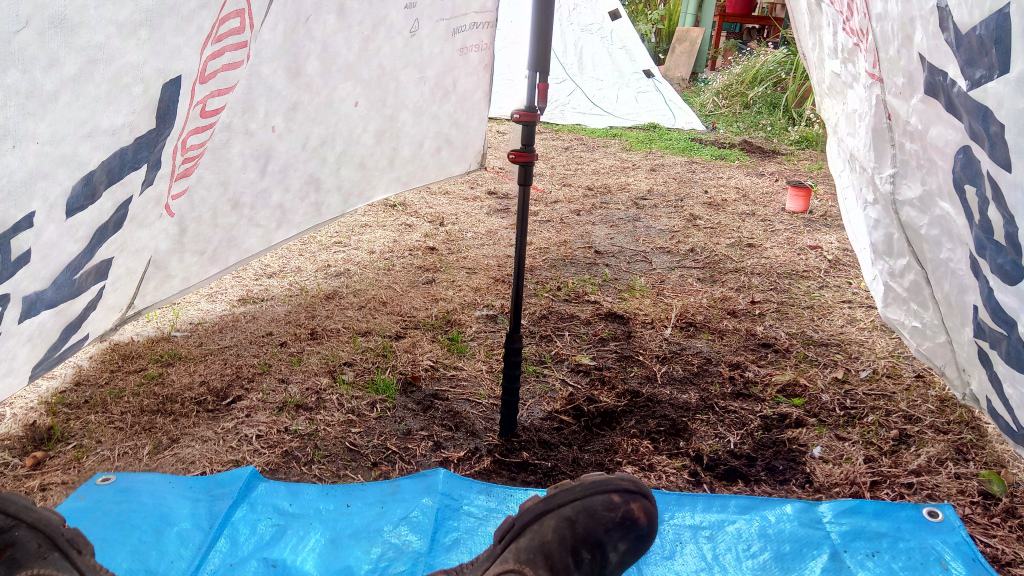
Note the extempore tent pole posted about here: https://www.theultralighthiker.com/2020/03/16/how-to-make-a-tent-pole/Lots of room for luggage, dogs etc at the entrance.
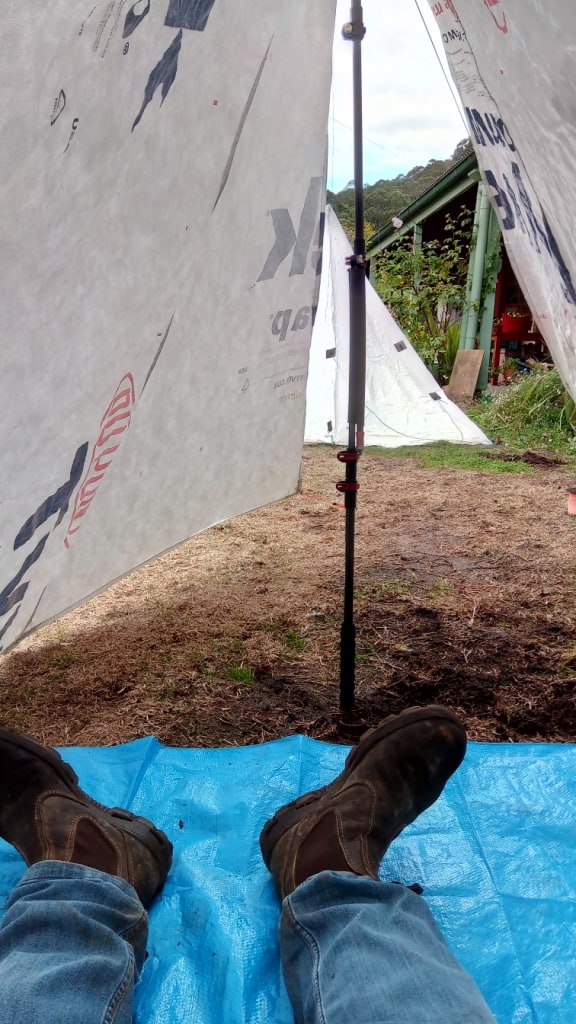
And quite a bit at the back too. The back can be raised to allow extra ventilation on hot rainy days.
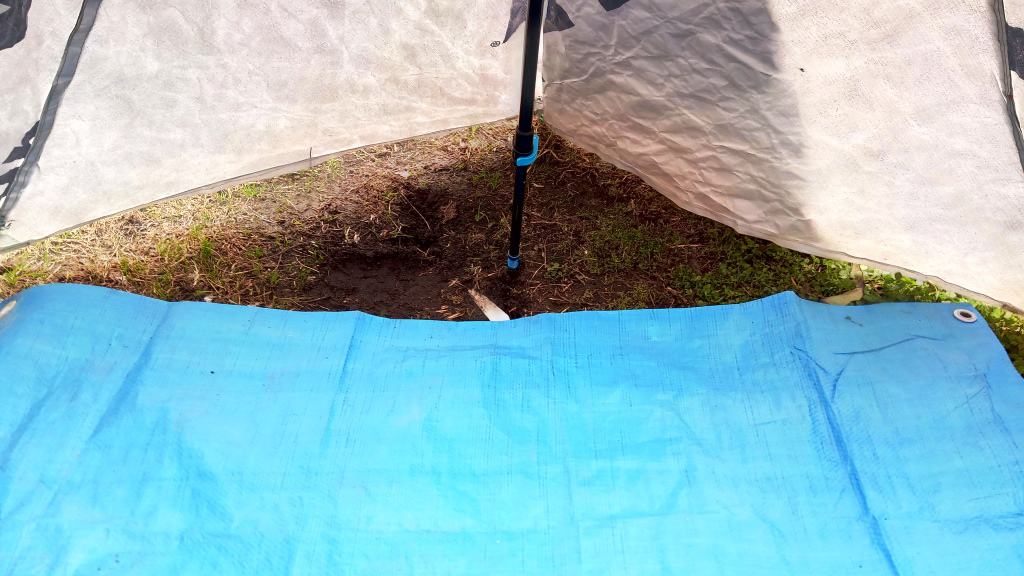
There is that tent pole again.
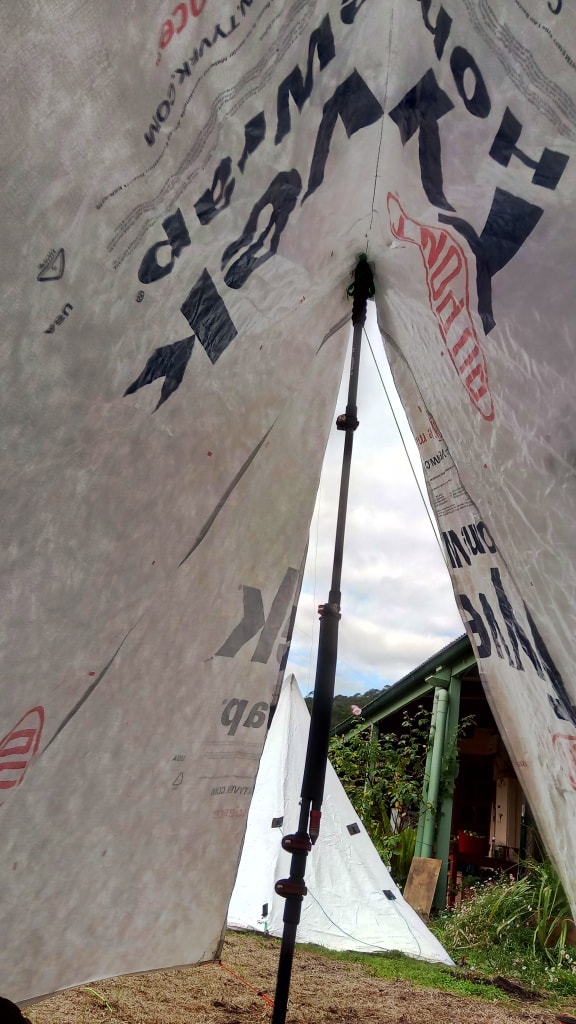
As I said, Stay tuned:
See Also:
https://www.theultralighthiker.com/2015/05/11/col-townsend-whelens-forester-tent/
https://www.theultralighthiker.com/2019/09/06/two-great-poly-tarp-configurations/
https://www.theultralighthiker.com/2018/03/02/tyvek/
https://www.theultralighthiker.com/2017/07/01/the-dawn-of-ultralight/
https://www.theultralighthiker.com/2016/02/12/new-tyvek-forestertent-design/
https://www.theultralighthiker.com/2019/09/24/10-by-10-tarp-update/
https://www.theultralighthiker.com/2020/03/27/silnylon-hammock-tent/
https://www.theultralighthiker.com/2016/04/20/catenary-curves/
https://www.theultralighthiker.com/2018/01/13/simple-hammock-double-up/
https://www.theultralighthiker.com/2017/09/16/fire-umbrella/
